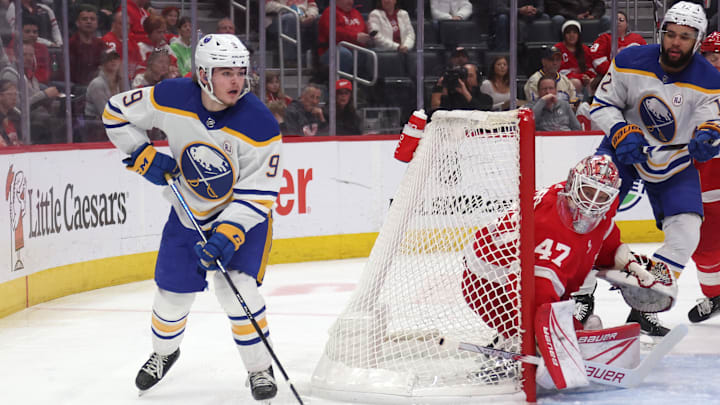Since Steve Yzerman took the helm as executive vice president and general manager of the Detroit Red Wings on April 19, 2019, the team has shown consistent improvement each season. This year, they earned an impressive 91 points, a significant leap from the 80 points of the previous season. The 2023-2024 season was particularly thrilling, coming agonizingly close to securing a playoff spot. Despite this near miss, there is widespread optimism regarding the team's future. With a strong young core of Red Wings stars and one of the NHL's top three prospect pools, the team is poised for success. Many anticipate that the team will continue its upward trajectory toward cup contention over the next three seasons. However, there is a notable risk of regression in the upcoming 2024-2025 season, as exemplified by the struggles of the Buffalo Sabres.
A year ago, the Buffalo Sabres accumulated 91 points but narrowly missed out on clinching the last playoff spot, falling just short of the Florida Panthers. At that time, Buffalo was perceived to be a year or two ahead of the Red Wings in their rebuilding process. Tage Thompson was emerging as a potential superstar, bolstered by significant young scoring depth among the speedy forward units. Additionally, two promising defensemen, Rasmus Dahlin and Owen Power, both former number-one draft picks, began to log substantial ice time on the blue line. The improvement of Ukko-Pekka Luukkonen in goal was also instrumental in the team's progress. With these elements in place, the young Sabres team was seen as rapidly improving and was expected to contend for a playoff spot in the 2023-2024 season.
This season, the Buffalo Sabres were largely irrelevant. They ended up with 84 points and were never a threat to make the playoffs. Setbacks due to injuries or poor individual seasons often happen to good teams. But the Sabres did not have an especially injury-prone season. Also, Thompson was a quality scorer, Power and Dahlin emerged as stars, and Luukkonen made significant improvements in goal compared to the year before. But the Sabres had a major rebuild backslide.
The Sabres scored 50 fewer goals than the year before and gave up 56 fewer goals. The Buffalo Sabres are still a young and improving team that will challenge for the playoffs next year. Yet, their coach was fired, fan optimism was shaken, and the franchise's confidence was not strong. Trading Casey Mittelstadt for Bowen Byram was a risky and maybe panicky move. Next season will determine whether cup contention is in the Sabres’ future or if they will be an also-ran for the foreseeable future.
This year’s Red Wings are remarkably similar to the 2022-2023 Sabres.
The team will almost certainly look different next season: younger and faster, which also means less mature and experienced. There is a significant risk of a Buffalo Sabre-like backslide for 2024-2025. How can this fate be avoided?
There is anticipated to be a turnover of players, introducing a significant unknown into the team's composition. It is reasonable to expect that Kane, Perron, Gostisbehere, and Fabbri will not be part of the team next season. These individuals were pivotal players, embodying poise, toughness, and the capacity to deliver in crucial moments. Although promising prospects are on the horizon, it would be unfair to anticipate that any young player can seamlessly replicate the veteran NHLers' poise and understanding of what it takes to succeed in the world's premier hockey league.
Continued team improvement will be mostly likely due to unexpected positive performances. Joe Veleno or Michael Rasmussen could have big offensive years. Marco Kasper or Nate Danielson could make the Red Wings and show more offensive upside than previously thought possible. A young scoring winger such as Jonatan Berggren or Carter Mazur could break through and add to scoring depth. All of these are possible, but hope is not a brilliant strategy.
The Red Wings will likely require established and dependable contributors, a category of players that typically come with a high price tag. But the Red Wings can no longer afford to take risks with their available cap space. Securing a reliable goaltender to bridge the gap until Cossa or Augustine are ready to take on the starting role is a top priority. Players like John Gibson, Chris Driedger, or even Alex Nedeljkovic would represent upgrades at this position.
There is a widespread desire for a top-six winger, but such players come at a premium. Although it may not be a wise long-term investment, acquiring one of a free agent such as Teuvo Teravainen, Elias Lindholm, or Jake Guentzel has the potential to elevate the team to the next level next season. Or at least avoid back-sliding like the Buffalo Sabres.
